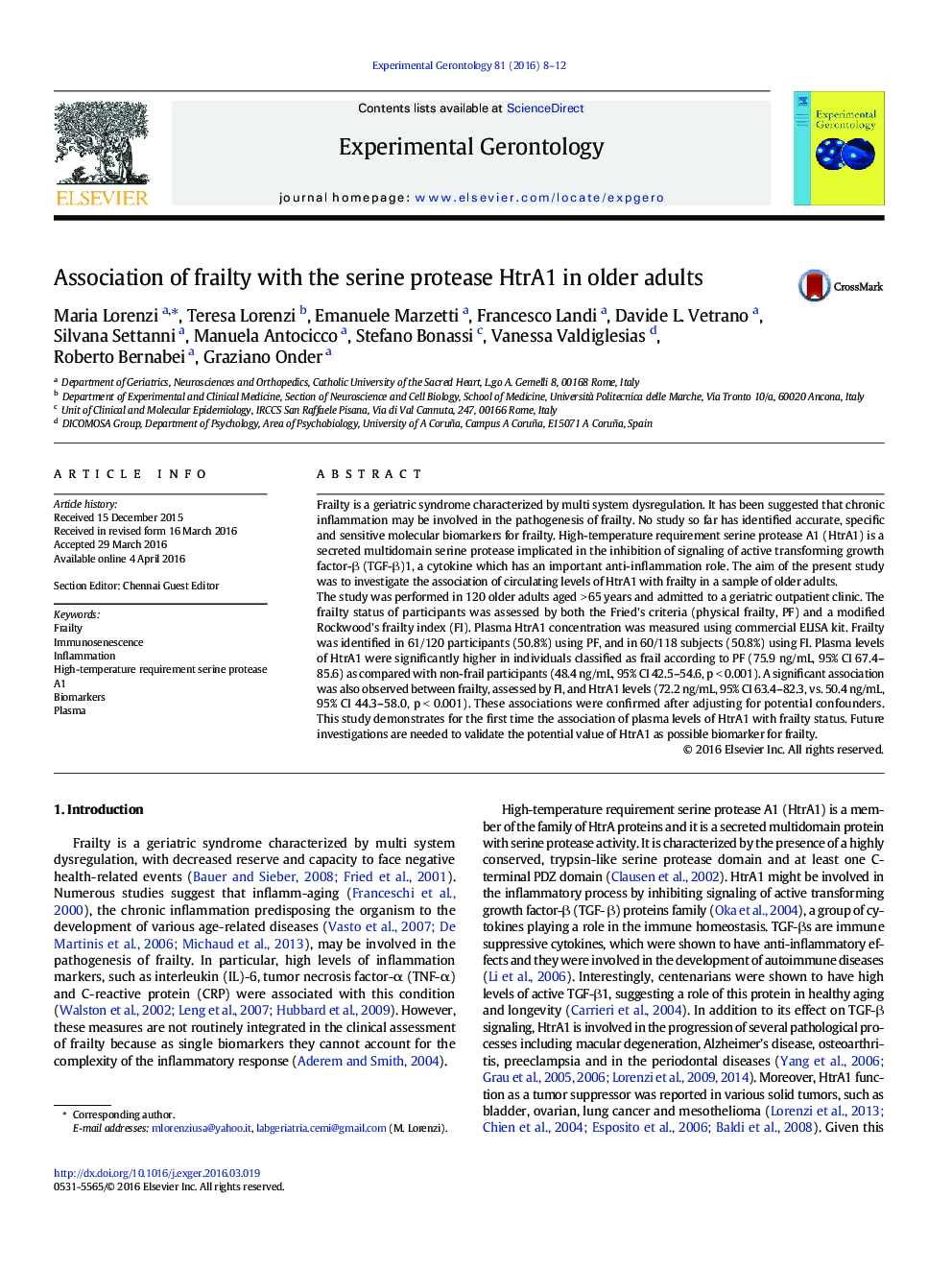| Article ID | Journal | Published Year | Pages | File Type |
|---|---|---|---|---|
| 8262788 | Experimental Gerontology | 2016 | 5 Pages |
Abstract
The study was performed in 120 older adults aged > 65 years and admitted to a geriatric outpatient clinic. The frailty status of participants was assessed by both the Fried's criteria (physical frailty, PF) and a modified Rockwood's frailty index (FI). Plasma HtrA1 concentration was measured using commercial ELISA kit. Frailty was identified in 61/120 participants (50.8%) using PF, and in 60/118 subjects (50.8%) using FI. Plasma levels of HtrA1 were significantly higher in individuals classified as frail according to PF (75.9 ng/mL, 95% CI 67.4-85.6) as compared with non-frail participants (48.4 ng/mL, 95% CI 42.5-54.6, p < 0.001). A significant association was also observed between frailty, assessed by FI, and HtrA1 levels (72.2 ng/mL, 95% CI 63.4-82.3, vs. 50.4 ng/mL, 95% CI 44.3-58.0, p < 0.001). These associations were confirmed after adjusting for potential confounders. This study demonstrates for the first time the association of plasma levels of HtrA1 with frailty status. Future investigations are needed to validate the potential value of HtrA1 as possible biomarker for frailty.
Related Topics
Life Sciences
Biochemistry, Genetics and Molecular Biology
Ageing
Authors
Maria Lorenzi, Teresa Lorenzi, Emanuele Marzetti, Francesco Landi, Davide L. Vetrano, Silvana Settanni, Manuela Antocicco, Stefano Bonassi, Vanessa Valdiglesias, Roberto Bernabei, Graziano Onder,
